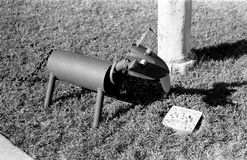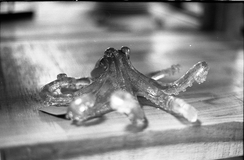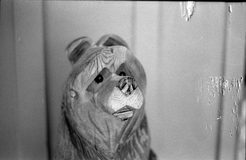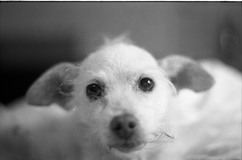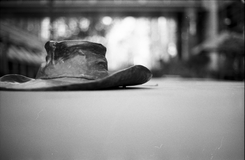Spotmatic

- Year: 1964
- Manufacturer: Pentax
- Origin: Japan
- Film Format: 35mm
- Lens: Super Takumar 55mm f/1.8
- Lens Construction: 6 Elements/5 Groups
- Lens Mount: M42 Screwmount
- Focus: 0.45m to infinity
- Shutter Type: Horizontally Traveling Cloth Focal Plane
- Shutter Speeds: 1s-1/1000
- Meter: Center-Weighted TTL CdS Meter
- Viewfinder: TTL Viewfinder, 93% Coverage, 0.89 Mag.
- Exposure Modes: TTL Match-Needle
- Flash: PC Sync Socket, 1/60 Sync Speed
- Battery: 1x PX400
- Dimensions: 143x92x49mm, 645cm3
- Weight: 621g
This was the very first 35mm SLR I ever owned, my first 35 with manual control of anything, and the camera that got me hooked on both shooting film and learning about the history of all these cameras. I had signed up for a B&W photography class at my local community college, and I wanted to get some experience beforehand, because I was worried I'd show up and be the only person who didn't know what they were doing. So I found someone on craigslist who was giving away an old Pentax for students and ended up with a bag containing the camera, as well as a third party Nikon tele-zoom and flash that were at least 15 years newer than the Spotmatic. She mentioned she used to shoot for local newspapers, so presumeably that's what this Spotmatic spent it's life doing.
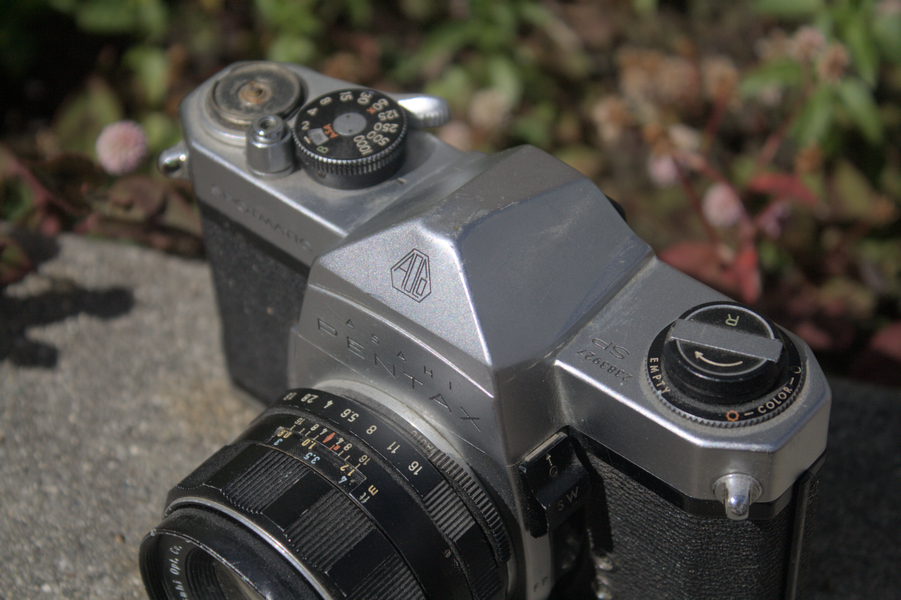
This camera is quite old for an SLR, from an era where things like TTL metering were still being worked out, and a time where a bunch of unrelated manufacturers were all using the same lens mount. The M42 screw mount is exactly what it sounds like, a 42mm wide mount with screw threads to mate the lens to the camera. It was originally invented by Zeiss in the late 1930s, but after WWII, their patents, along with those of the rest of the German camera makers, were invalidated, leaving the door open for anyone to use their inventions. Asahi Optical launched their first screwmount SLR, the Pentax, in 1957, and they iterated rapidly over the next few years. The Spotmatic came out in 1964, and was the first in a line of SLRs that would be produced all the way until 1975, when Pentax abandoned the M42 mount and switched to the K bayonet mount. Along the way, Spotmatic cameras would gain full aperture metering, limited auto-flash support, and even rudimentary auto-exposure. By the time production stopped, more than 4 million had been made, making this a relatively easy to find older SLR.
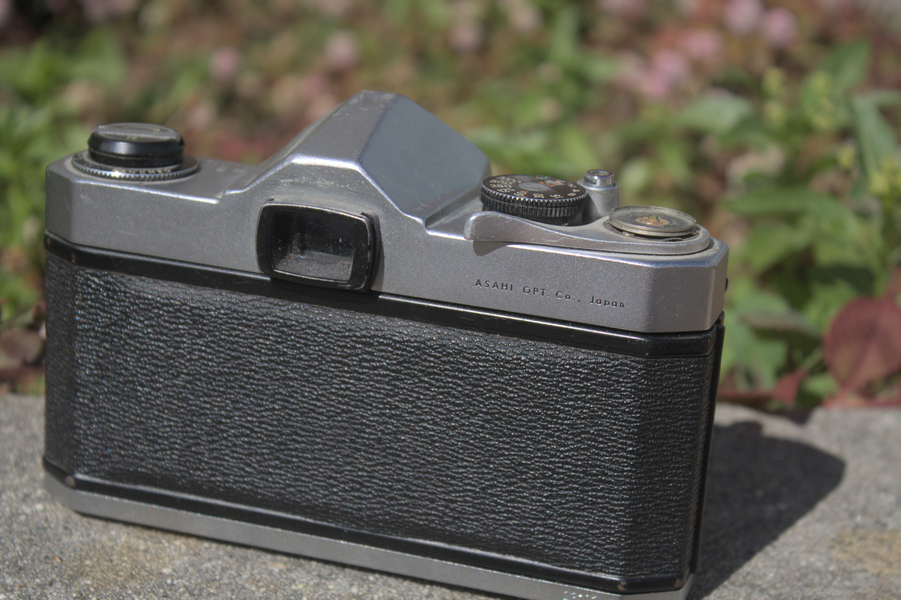
This particular camera is a Spotmatic SP, which is what the original Spotmatic was branded as once they started introducing cheaper models alongside it. While it may not seem like much today, the TTL meter and stop-down metering system were quite advanced for the time. To meter, you slide the switch on the left of the lens mount down, which sets the lens to actually stop down the aperture to whatever you set on the lens ring. This also causes the viewfinder to get dimmer as you set the aperture smaller, which is why it's not enabled all the time. Once you've set the aperture and shutter speed such that the needle on the left of the viewfinder is centered, you slide the switch back up, opening the aperture to it's widest position and disabling the meter. You're then free to recompose, focus, and take your shot. It feels a bit tricky to describe in words, but in practice it's quite simple after a bit of practice. It might be because I learned on it at first, but I can still close my eyes and imagine every bit of that process.
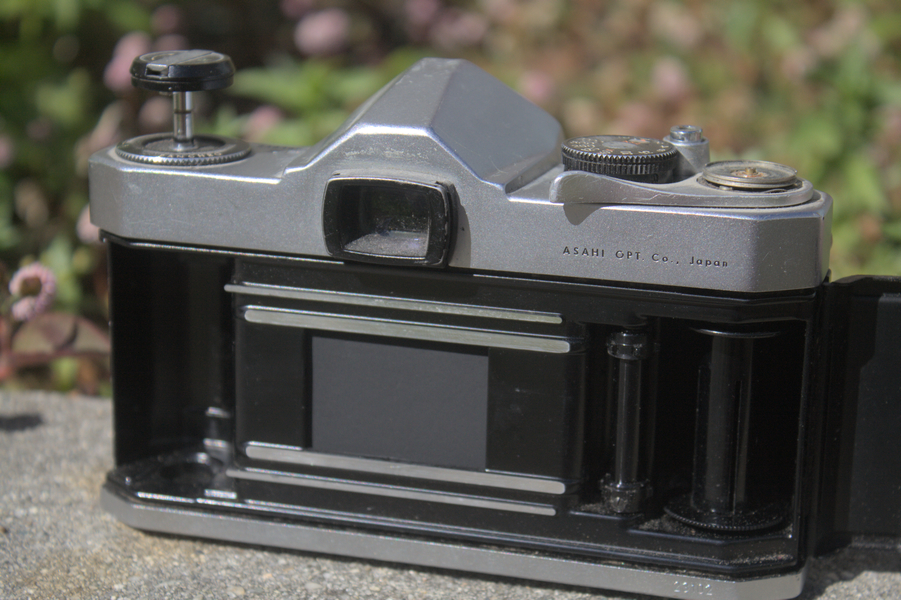
While the Spotmatic's meter was it's headlining feature, the rest of the camera was no slouch either. The body, carried forward from the original Pentax, is quite compact and easy to carry. The viewfinder is big and easy to focus with, the meter is simple to understand, and all the controls are big and easy to find without looking while not getting in the way of each other. The wind lever on mine was quite sluggish, but being my first camera I honestly had no idea until I used other cameras eventually. The lens on mine was also top notch, both quite sharp and very satisfying mechanically, and the rest of the lens range has a similar reputation. There were even a handful of zoom lenses created for it, though they were huge and 1960s zooms have never inspired confidence in me personally.
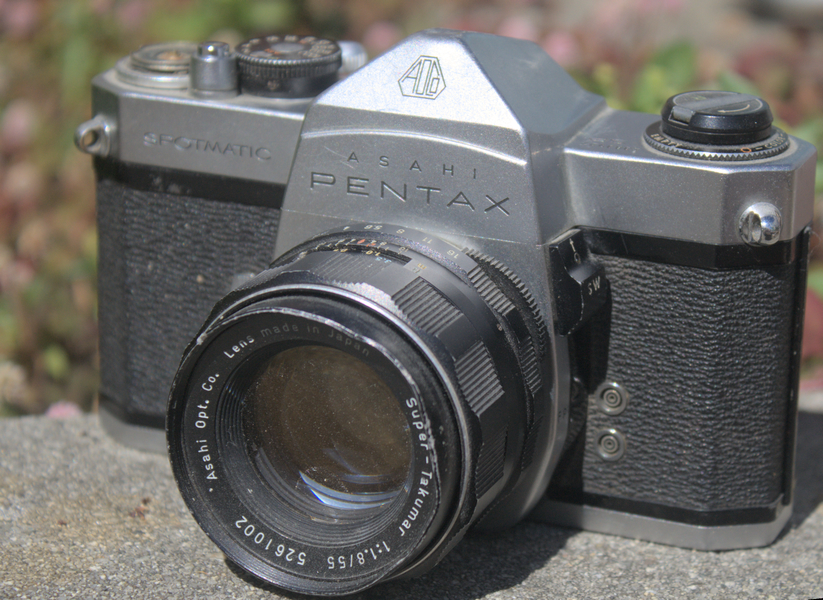
In the end, I ended up shooting a dozen or so rolls through the camera, and I'd have shot a bunch more if the winder hadn't completely failed on me. My only warning was a few overlapping shots at the end of a roll, before it stopped wanting to advance film at all not long after. Still cocks the shutter and fires, but I've not trusted it enough to put film through ever since. Around the same time, my grandad emailed me to ask if I'd like his old film cameras, including a Nikomat EL which I promptly switched to, using it for the rest of the semester of class and the entire next one as well. If it hadn't failed though, I think I'd still be shooting it on occasion, especially when I don't want to carry around any of the boat anchor manual SLRs I own, or when I just want to use something that's about as simple as they come while not leaving you completely on your own. For now though, it sits on my shelf, there to look pretty and remind me that size and features really aren't everything in an SLR.
